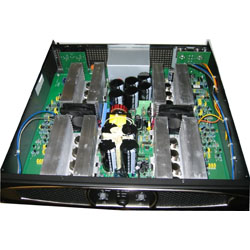
Conventional Amplifier Wisdom
MOSFET amplifier designs are known to be more musical than Bipolar designs, especially in the mid to hi frequencies.
Bipolar designs are known for their ability to deliver high current into various loads.
This is good for low frequencies (LF).
As such, it was once believed that the ultimate sound system would be to use MOSFET amplifiers for the MF/ HF and Bipolar amplifiers for the LF.
Why is this? Is it still true today?
To understand the differences between the two topologies one must have an understanding of the history of theses devices and their designers.
Have these devices improved through the years? Of course they have! Have the engineers improved their designs through amplifier failure? Certainly!
The greatest amplifier design advancements have come from designers and not necessarily with the components.
Sure, many more manufacturers are supplying us with a better selection of these devices. However, the real change for today’s engineer is proven circuitry available for their reference.
MOSFETs are a relativity modern addition to the family of power transistors. They were introduced by Hitachi for audio applications in 1977. A MOSFET transistor consists of three elements, Gate, Source and Drain.
A MOSFET transistor in its simplest terms works like a water valve. When voltage is applied to the Gate, the valve opens and lets current flow from the Source to the Drain.
The early problem of these new devices was the Drain to Source internal impedances were high resulting in low Damping factors.
In those early days of the Hitachi device, the internal resistance of MOSFETs was greatly reduced to yield LF performance that rivaled Bipolar LF performance.
This gave us the impression that MOSFETs cannot produce good LF. As the old saying goes, “it only takes a minute to create a good impression but a lifetime to overcome a bad one”.
Big Drivers Required
Bipolar designs have the ability to deliver enormous amounts of current to a load. A Bipolar transistor consists of three elements as well, Base, Collector and Emitter. The current path is from the Collector to the Emitter.
There is also a significant amount of current flow from the Base to the Emitter. Bipolar amp designs require a hefty drive stage.
These devices require additional heat-sinking because the Base of each output transistor is current driven not voltage driven, causing them to heat up.
MOSFETs also require a drive stage, but have much less of a load requirement compared to a Bipolar driver stage because they are voltage driven, not current driven.
